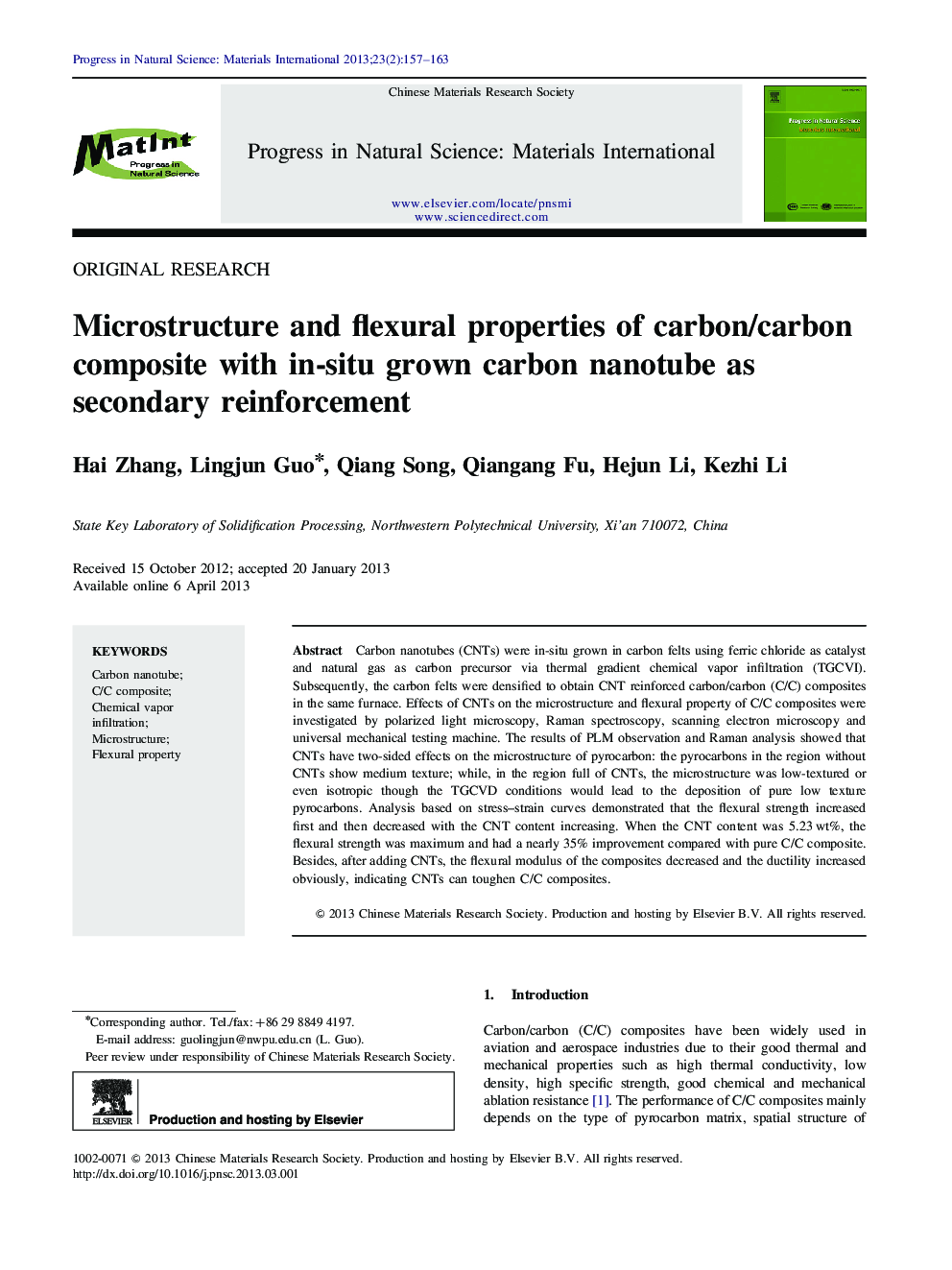| Article ID | Journal | Published Year | Pages | File Type |
|---|---|---|---|---|
| 1548455 | Progress in Natural Science: Materials International | 2013 | 7 Pages |
Carbon nanotubes (CNTs) were in-situ grown in carbon felts using ferric chloride as catalyst and natural gas as carbon precursor via thermal gradient chemical vapor infiltration (TGCVI). Subsequently, the carbon felts were densified to obtain CNT reinforced carbon/carbon (C/C) composites in the same furnace. Effects of CNTs on the microstructure and flexural property of C/C composites were investigated by polarized light microscopy, Raman spectroscopy, scanning electron microscopy and universal mechanical testing machine. The results of PLM observation and Raman analysis showed that CNTs have two-sided effects on the microstructure of pyrocarbon: the pyrocarbons in the region without CNTs show medium texture; while, in the region full of CNTs, the microstructure was low-textured or even isotropic though the TGCVD conditions would lead to the deposition of pure low texture pyrocarbons. Analysis based on stress–strain curves demonstrated that the flexural strength increased first and then decreased with the CNT content increasing. When the CNT content was 5.23 wt%, the flexural strength was maximum and had a nearly 35% improvement compared with pure C/C composite. Besides, after adding CNTs, the flexural modulus of the composites decreased and the ductility increased obviously, indicating CNTs can toughen C/C composites.
